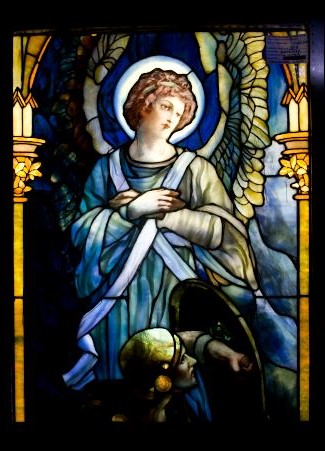To begin making leaded-glass windows artists make a preliminary drawing of the design, afterwards they would illustrate a full sized image called a cartoon. After their design is complete they take the colors of glass chosen and outline the shape with white lime wash. A dividing iron is used to cut around these shapes after it is heated. These cuts aren’t perfect so next they use a grozing iron that will chip away the excess glass around the white lime wash outline. In order to paint designs onto the glass a special type of paint called vitreous paint is necessary. This is created by “mixing iron oxide and ground copper with powdered glass.” In order to set the paint in the glass the artist has to place it in a kiln. Layers of paint can be used to create different effects on the final product. Now to piece the puzzle together strips of lead are used to connect the pieces of glass. This lead is called lead came. The name for this process of assembling a panel is glazing. In order to connect the lead cames, artists need to soldor it all together. In order to waterproof and “secure the glass within the leads,” artists cement the panel. Once it’s ready a dry bush is used to rub off the cement. Now one panel is finished, but often the case is that the artist wishes to create a paneled window which require them to repeat this process on a different layer. Tiffany artisans used their own unique techniques to create works but these are the basic techniques used by stained glass makers.
Citations
“How Stained Glass Is Made.” Khan Academy. Accessed July 14, 2015. https://www.khanacademy.org/partner- content/getty-museum/getty-decorative-arts/a/how-stained-glass-is-made.

Exploring Tiffany Windows.
Ready to learn more? Following the links below to explore!
